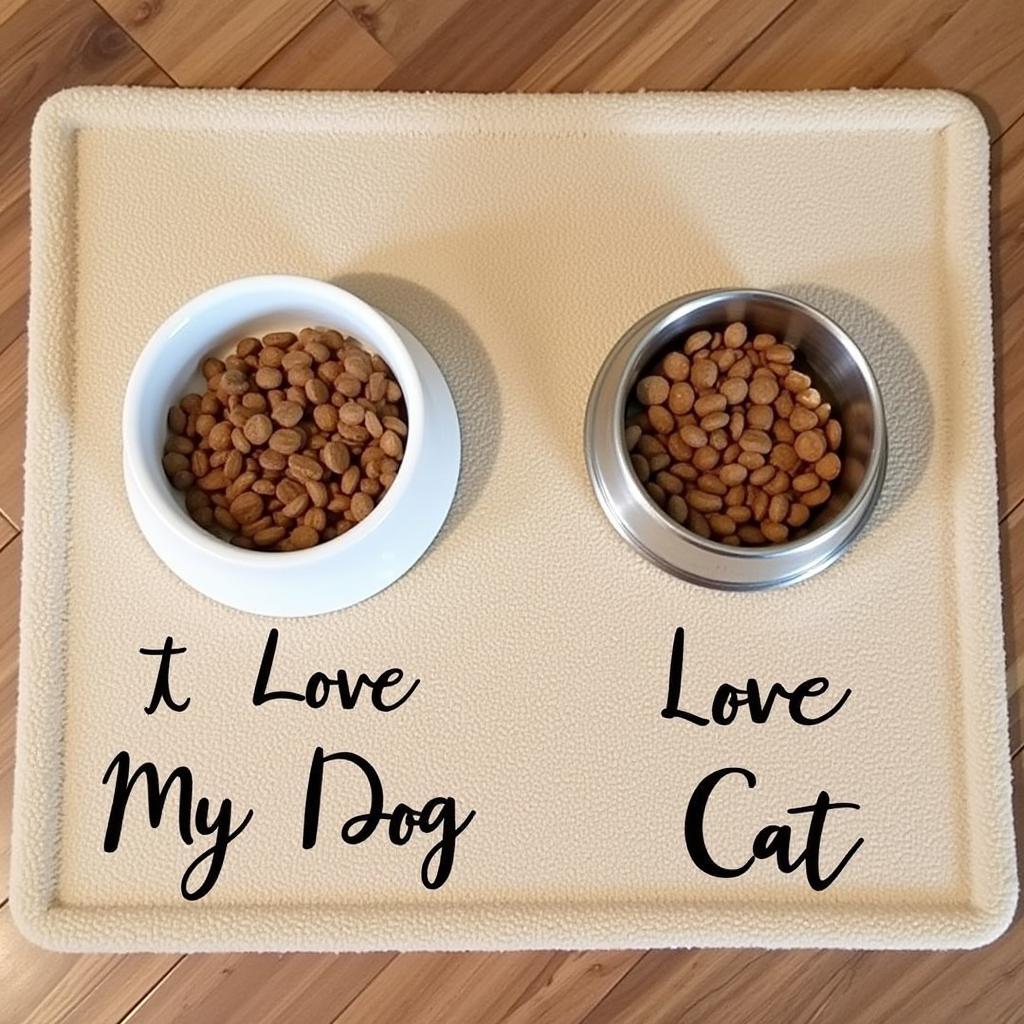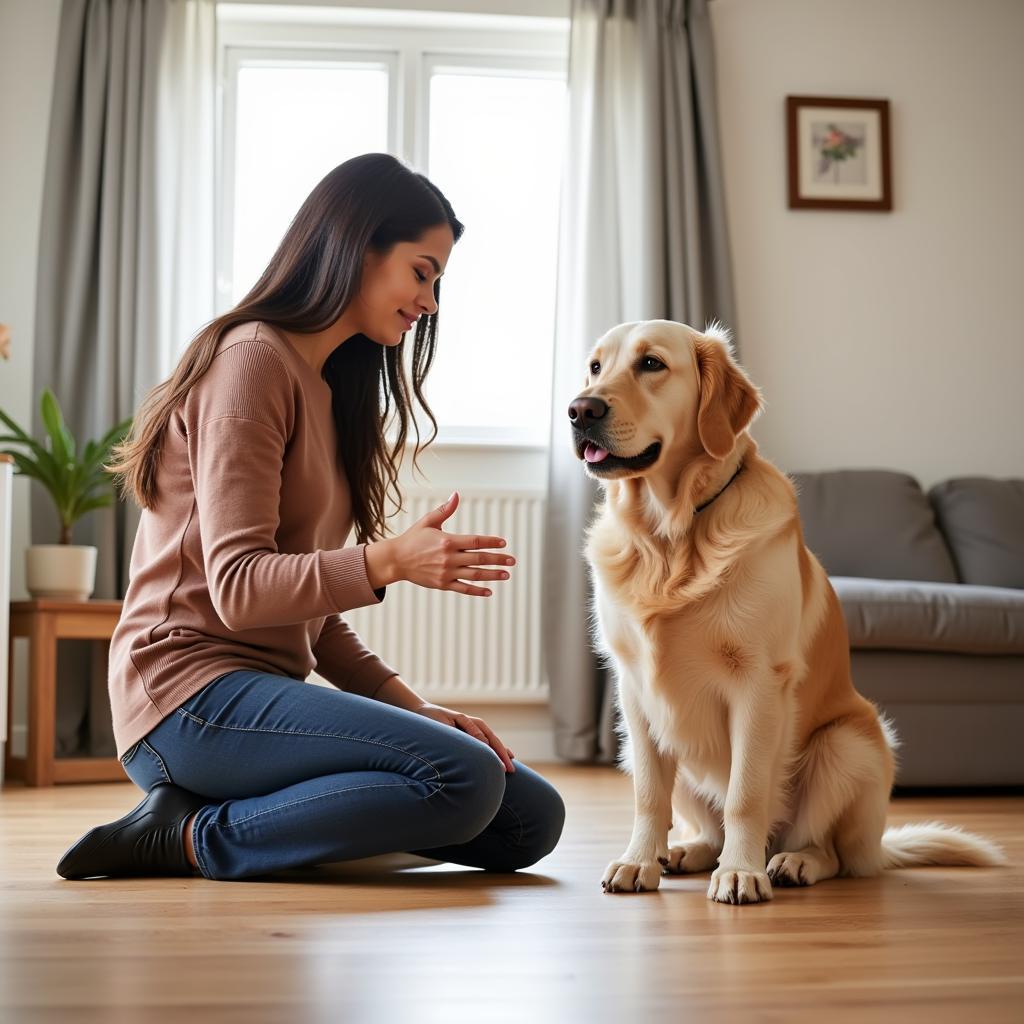Dogs eating cat food is a common problem for pet owners. While a nibble here and there might seem harmless, frequent cat food snacking can lead to digestive upset, obesity, and even pancreatitis in dogs. So, how do you put an end to this inter-species food theft? It’s all about understanding why your dog finds cat food so irresistible and implementing some effective strategies to keep them away.
Why is My Dog So Obsessed with Cat Food?
Let’s face it: cat food is designed to be tempting to felines. It’s often higher in fat and protein than dog food and packed with enticing aromas and flavors that your dog finds irresistible. Think of it like a delicious-smelling pizza constantly within paw’s reach!
Here are some common reasons why dogs love cat food:
- Biological Drive: Dogs have a natural scavenging instinct, and cat food, being readily available and calorie-dense, fits the bill perfectly.
- Taste and Smell: As mentioned earlier, cat food is formulated to be highly palatable to cats, which unfortunately, also appeals to dogs.
- Boredom or Hunger: A bored or hungry dog might be more inclined to explore alternative food sources, including the cat’s bowl.
Effective Strategies to Stop Your Dog from Eating Cat Food
Now that you understand the reasons behind your dog’s cat food obsession, let’s explore some effective solutions to curb this behavior:
1. Separate Feeding Areas
This is perhaps the most straightforward solution. Feed your dog and cat in separate locations, preferably in different rooms. This physical separation makes it harder for your dog to access the cat food.
2. Establish Different Feeding Times
Feed your pets at designated times, and while they eat, supervise them. Once mealtime is over, pick up the bowls, eliminating the temptation for your dog to sneak a snack later.
 Two separate feeding stations for a dog and a cat
Two separate feeding stations for a dog and a cat
3. Elevate the Cat’s Food
Cats are natural climbers! Consider placing your cat’s food bowl on an elevated surface like a countertop, shelf, or cat tree. This allows your cat easy access while keeping it out of your dog’s reach.
4. Invest in Puzzle Feeders
Puzzle feeders can be a great way to keep your dog mentally stimulated and slow down their eating. The challenge of working for their food can distract them from eyeing the cat’s bowl.
5. Train Your Dog
Basic obedience training, particularly “leave it” and “stay” commands, can be incredibly helpful in preventing your dog from approaching the cat’s food. Reward your dog for good behavior when they ignore the cat food.
6. Address Underlying Issues
If your dog’s cat food stealing is excessive, consider whether underlying issues like boredom or hunger might be contributing to the behavior. Ensure your dog is getting enough exercise, mental stimulation, and a balanced diet.
 Dog owner training their dog with a "leave it" command
Dog owner training their dog with a "leave it" command
When to Consult a Veterinarian
If you’ve tried implementing these strategies and your dog continues to eat cat food excessively, it might be time to consult your veterinarian. They can help rule out any underlying medical conditions and offer further guidance tailored to your dog’s specific needs.
Conclusion
Keeping your dog from eating cat food is crucial for the health and well-being of both pets. By understanding the reasons behind this behavior and implementing the strategies outlined above, you can create a harmonious mealtime experience for all furry members of your household. Remember, consistency and positive reinforcement are key to success.